Breast Tumor Clinic
Home
Gynecological Tumor Clinic
Digestive and Minimally Invasive Tumor Clinic
Breast Tumor Clinic
Skin Cancer (Melanoma) and Sarcoma Clinic
Head and Neck Clinic
Surgery is a fundamental part of breast cancer treatment, and the way it is performed has changed over time, with the goal of making surgeries increasingly conservative without sacrificing the oncological outcome.
In general, breast cancer surgery usually consists of two components: surgery on the mammary gland itself, and surgery on the armpit, which includes the removal of lymph nodes that may be affected by the cancer.
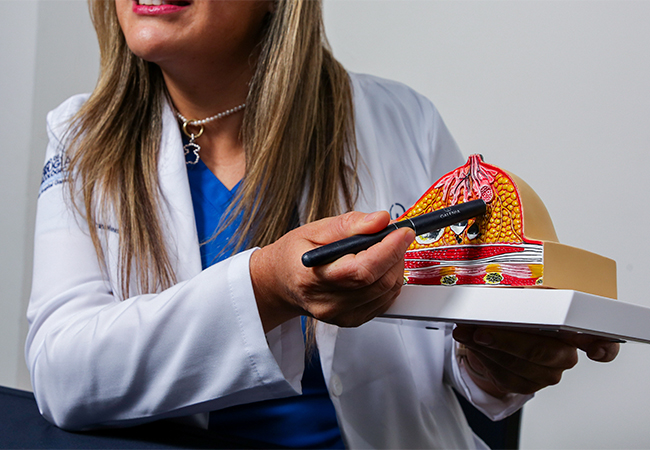
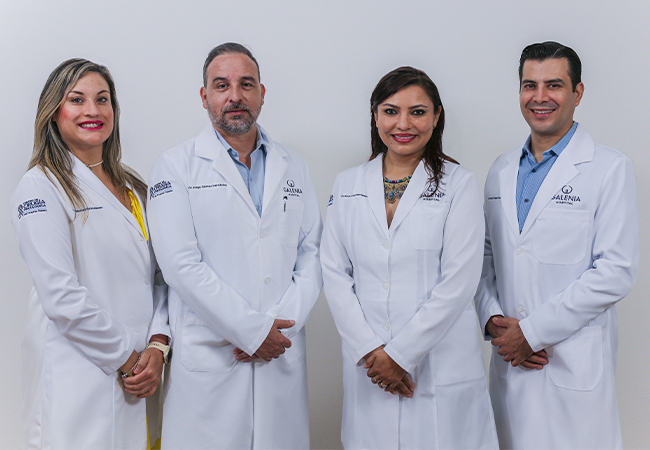
Breast-Conserving Surgery
Mastectomy is the traditional surgery for breast cancer and consists of the complete removal of the mammary gland. Currently, it is primarily indicated for multicentric tumors, meaning those affecting various sites in the breast, and when the patient prefers this surgery over breast-conserving surgery.
Mastectomy, in turn, has evolved over time, and there are several types of mastectomy:
- Simple mastectomy: Removal of the mammary gland without removing all axillary lymph nodes.
- Radical mastectomy: Removal of the mammary gland, with the removal of all axillary lymph nodes.
- Subcutaneous mastectomy: Removal of the mammary gland, preserving the skin and the nipple-areola complex, for immediate reconstruction with a prosthesis.
- Prophylactic or risk-reducing mastectomy: Removal of the healthy mammary gland, usually bilaterally, to reduce the risk of developing breast cancer in people who carry a genetic mutation that causes breast cancer. It can be performed subcutaneously for reconstruction with prostheses.
Mastectomy, being a mutilating surgery, can cause significant psychological and emotional damage to patients. It can alter their self-perception and, consequently, diminish their self-esteem, affect their sex life, and make them feel less self-confident.
Furthermore, since breast cancer is the most common cancer in the world, it is also the most studied, and this has led us to modify medical and surgical treatments in favor of performing less extensive, less morbid surgeries with adequate oncological results.
Breast-conserving surgery
This type of surgery aims to remove the breast tumor and preserve the remaining mammary gland with good cosmesis, but without compromising the oncological outcome of the surgery.
There are two scenarios in which breast-conserving surgery is performed:
- In early stages, when the tumor is small, and in many cases, this will even be the first step in cancer treatment.
- In advanced stages, when the tumor is large at the time of diagnosis, the decision is made to begin cancer treatment with chemotherapy. These drugs reduce the size of the tumor, making breast-conserving surgery with a successful oncological outcome and good cosmesis more feasible.
Currently, there are techniques such as tomosynthesis, which increases the sensitivity of mammography and can detect breast cancer when it is so small that it is not palpable, even at sizes as small as 3 mm.
When we have tumors so small they are not palpable, we need the support of a radiologist specializing in breast pathology, who performs lesion marking, which involves placing a metal guide at the site of the non-palpable tumor. This allows us to resect the non-palpable tumor without having to perform unnecessarily large resections. We call this precision surgery, and it is the most desirable option and usually has the best prognosis.
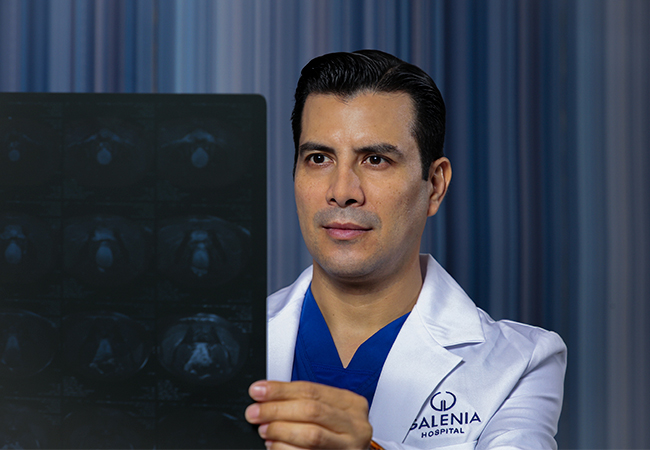
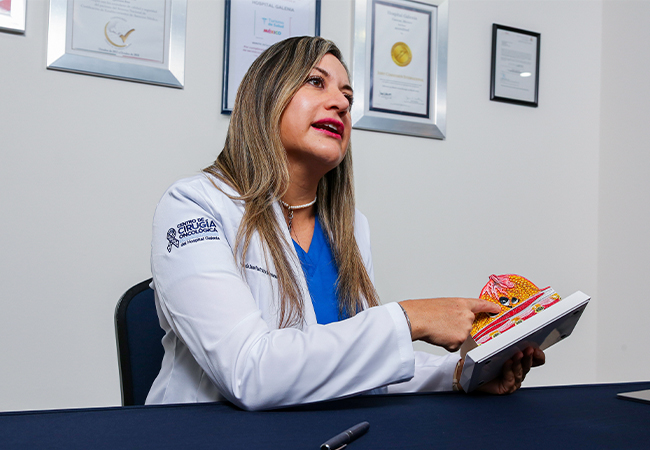
Oncoplastic Surgery
This is a set of surgical techniques used when very extensive resections are required, involving the removal of up to 30% of the total volume of the mammary gland. Its objective is gland preservation, with appropriate oncological treatment and good cosmesis.
These techniques vary, considering the different sites in the mammary gland where the tumor can be located. If the resection is very extensive and the gland’s volume is significantly modified, it may be necessary to symmetrize the contralateral gland. This means that the healthy gland will also undergo a surgical procedure similar to that performed on the diseased gland, in order to maintain symmetry or harmony between both glands.
Reconstruction
These are surgical techniques performed when we perform large tissue resections to achieve the goal of surgically eliminating all existing disease. This may involve the creation of muscle flaps (latissimus dorsi flap, transverse rectus abdominis flap), the placement of expanders, or the insertion of breast implants.
In many cases, reconstruction will be performed by the plastic and reconstructive surgery team.

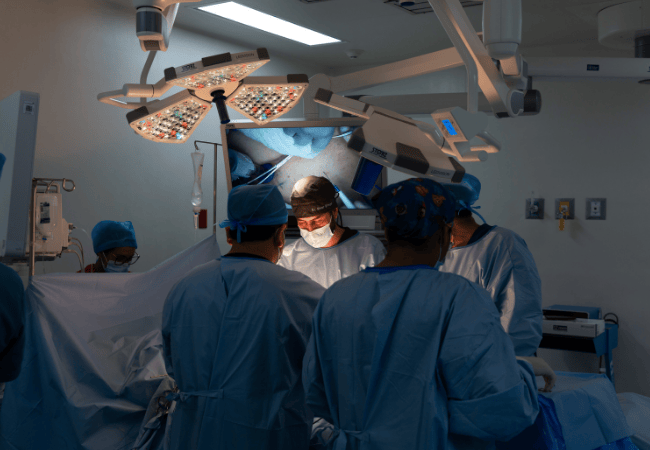
Underarm Surgery
All breast cancer surgeries include the evaluation or removal of the axillary lymph nodes on the affected side. Underarm surgery has also changed over time thanks to complementary treatments for the disease, such as chemotherapy and radiotherapy, which allow us to perform less extensive surgeries.
There are two types of underarm surgery:
- Sentinel lymph node biopsy: This is the ideal method for early stages of breast cancer. This technique involves injecting a dye (patent blue) and a radiopharmaceutical (technetium 99) at four points around the areola. These injections travel through the lymphatic vessels of the mammary gland to the underarm lymph nodes. During surgery, the lymph nodes that receive the dye and radiopharmaceutical are removed, considering that these would be the first nodes to be affected if the disease had already spread to the underarm. This technique allows for the removal of an average of about three lymph nodes, which reduces the risk of long-term complications such as lymphedema.
- Radical axillary dissection: This involves the removal of all lymph nodes in the axilla and is performed when the disease is diagnosed at an advanced stage and with lymph node involvement. This technique involves the removal of at least 10 lymph nodes.
Breast cancer surgery always requires the work of a multidisciplinary team that includes: gynecologic oncologists, surgical oncologists, radiologists with expertise in breast pathology, pathologists, nuclear medicine specialists, plastic and reconstructive surgeons, and psycho-oncologists.
Although treatment for the disease is well-established, each patient’s unique characteristics make them unique. Each case must be appropriately evaluated by the multidisciplinary team to achieve the greatest oncological benefit with the least possible repercussions. An important part of achieving the best results is having a team of trained and up-to-date physicians. Don’t hesitate to contact your oncologist and discuss your treatment options.

